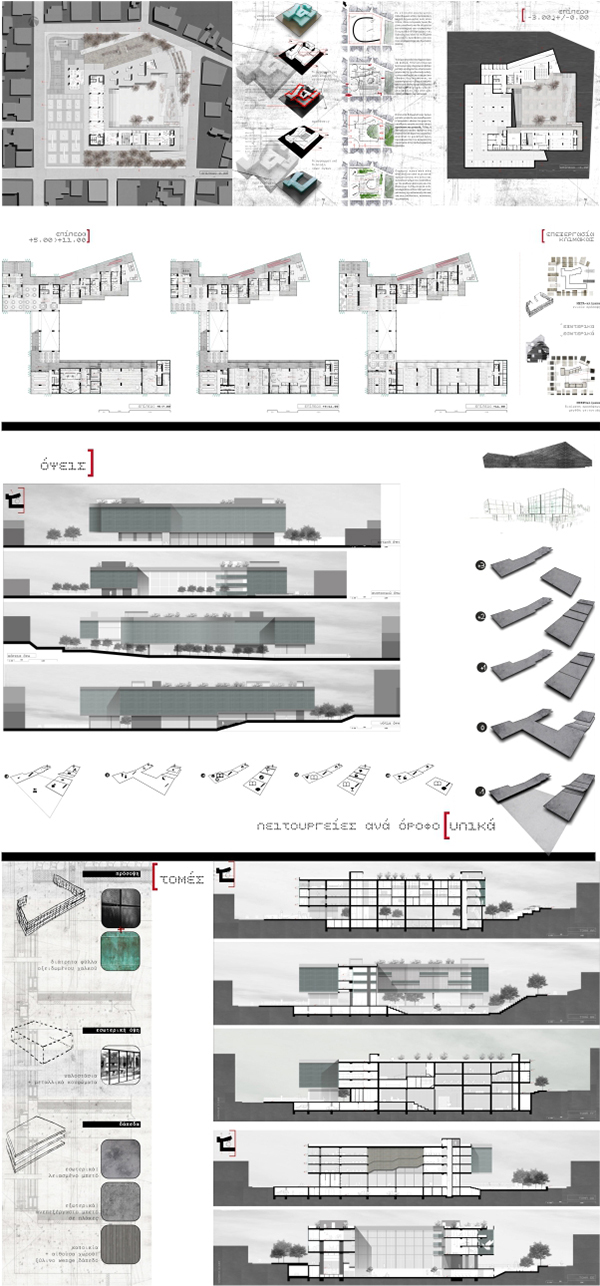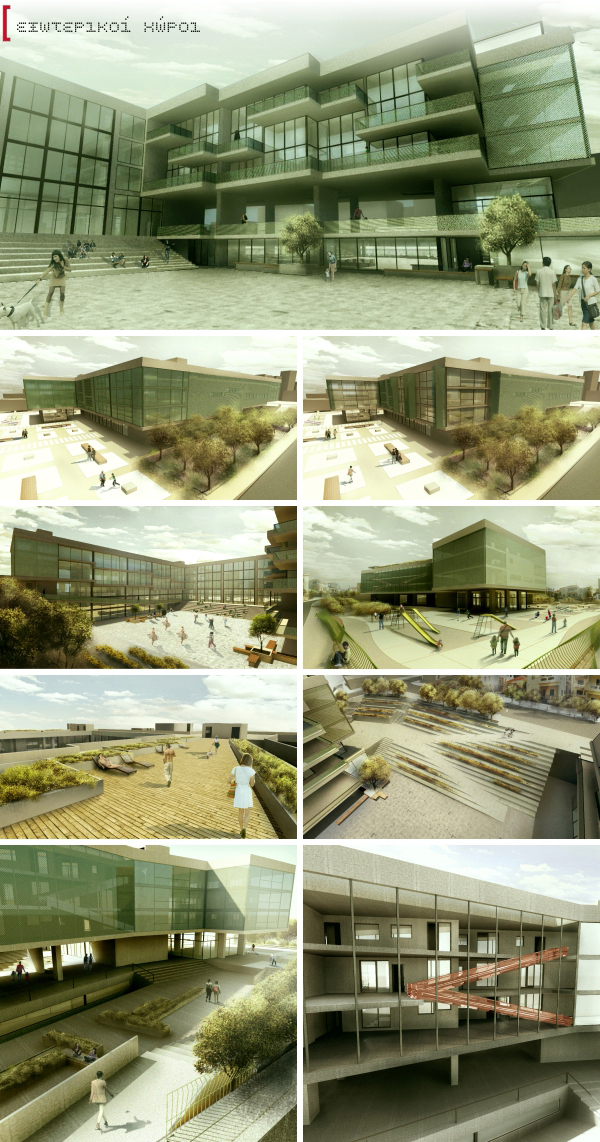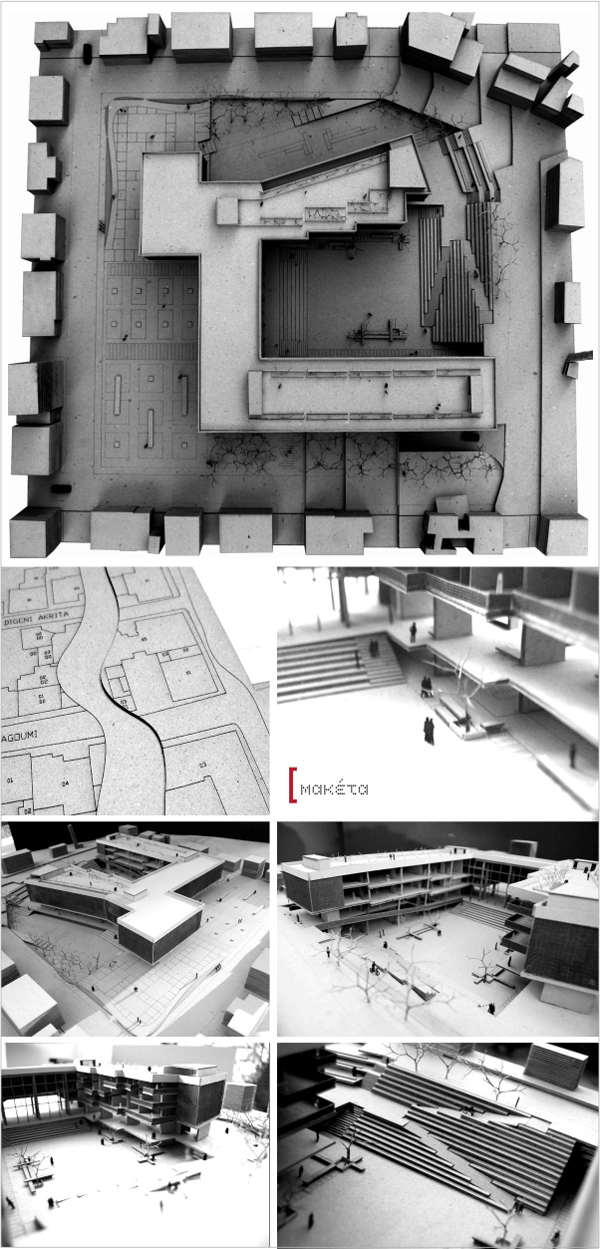STUDENTS PROJECTS
PROJECTS2012
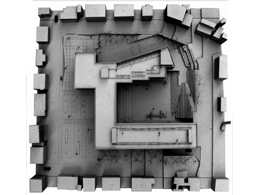
20 February, 2013
Between Public and Private: exhibition-expression-housing spaces at the block of the old hospital of Chania
A "hybrid building" of mixed-use public space, producing a new model of interactive relationships between housing-work-creation-exhibition.
Students: Christakopoulou Ismini
Sypervisors: Alexandros Vazakas, Konstantinos Alketas Oungrinis
Technical University of Crete, Department of Architecture
Presentation Date: 26 June 2012
This project proposes the development of the abandoned area, where the former hospital of the town of Chania was located. The aim is to create a new type of urban organization, based on the area of a typical urban block, through a new correlation between built and un-built space. The 'product' is a mixed-use public space (residential-working-creating-exhibiting), able to become an attraction point for the entire population of Chania, fueling the cultural agenda of the city on a daily basis.
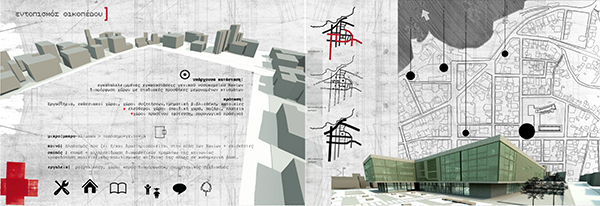
The questions, which the project is dealing with are:
1) how can we manage the area of an urban block containing mixed uses, in a holistic way
2) how can an 'hybrid' mixed-use public building be embodied in the existing urban fabric.
3) is it possible for a landmark building to work effectively in everyday scale of the neighborhood.
4) how can alter the use of an existing "shell" that has been imprinted in the residents' minds.
METHODOLOGY |
1) Theoretical background
The 'key words' used at this project are, "polyvalency", as defined by Hertzberger, referring to spaces that can be used in various ways, mostly without spatial changes, the concept of "incomplete space", referring to places and / or constructions awaiting completion through change, filling or use by users and finally "participatory planning" where architect and user interact during the process composition and design.
2) Reading-city urban fabric
As long as the town "body" is concerned, we noticed a lack of cultural and laboratory spaces. In the western part of the town some galleries and exhibition areas are located, however though, many of these areas are addressing to a very specific and limited audience. In the eastern part, we observe once again the appearance of similar activities, with much more 'loose characteristics' this time. Our final goal is to increase the second activities' concentration by creating a new type of organization, where the building volume is limited to one 'piece' and through its position it provides both the desired boundaries and the accesses at the public and private spaces.
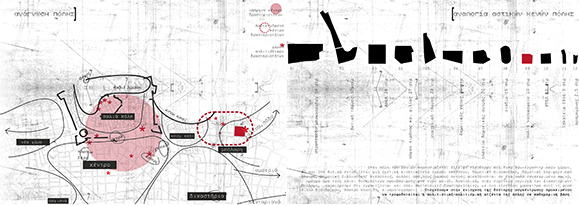
3) Functions
The building volume includes lab spaces (painting-sculpture workshop, theater, scenery construction area, photography, dance, video-visual arts studios, music-recording studio, projection area), residences (40 m2, 60 m2 and 90 m2) and a sectional library (which at the entry level serves as an exhibition space).
At the center of these spaces, a large courtyard is created, addressing to the whole neighborhood, while the building mass is surrounded by a flea market, a playground, a small garden and various green spaces. The set of operations acts as a means to attract visitors, while the housing areas provides permanent life on the block, avoiding the creation of another artists' assembly - ghetto. The modules can operate either independently or as a continuous space, a balance that is defined, permitted or controlled by the users themselves.
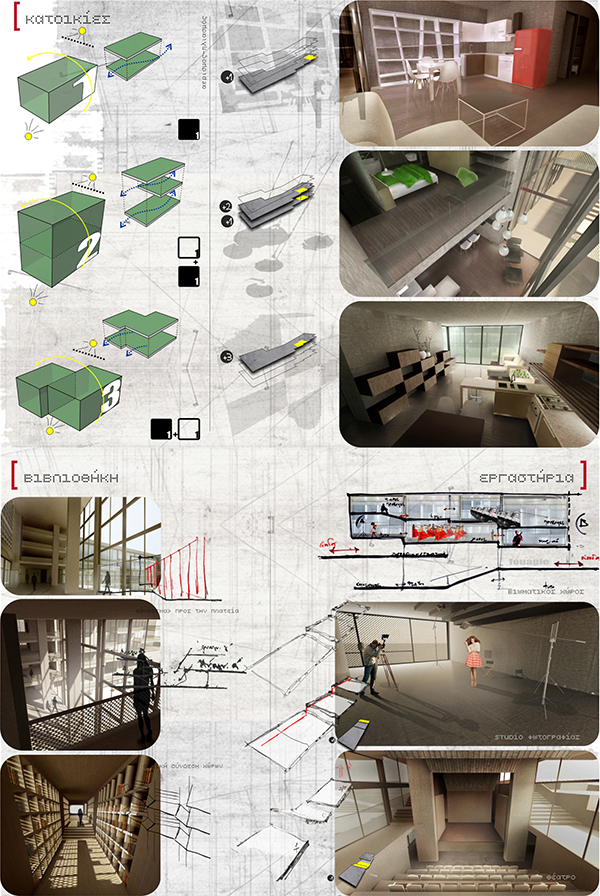
DESIGN CHOICES
urban block- outside spaces| Absence of dividing boundaries between neighborhood and selected block, while formulating public assembly areas and parks.
building mass | The building is both limit and filter. The western section acts as a filter between outdoor and courtyard, the southern is ripping into the ground, creating the labs while the northern takes distance from the ground in order to provide the necessary height while is able to ensure the visual 'privacy' of the houses .
façade| Elaboration of the building volume into two scales (large-scale as a landmark, small-scale as a typical building of the neighborhood), which can be easily readable at the façades; the external façade is continuous, making the building recognizable, whereas internally, is being divided (either externally-residencies, or inside-labs) repeating neighborhood buildings' scale.
